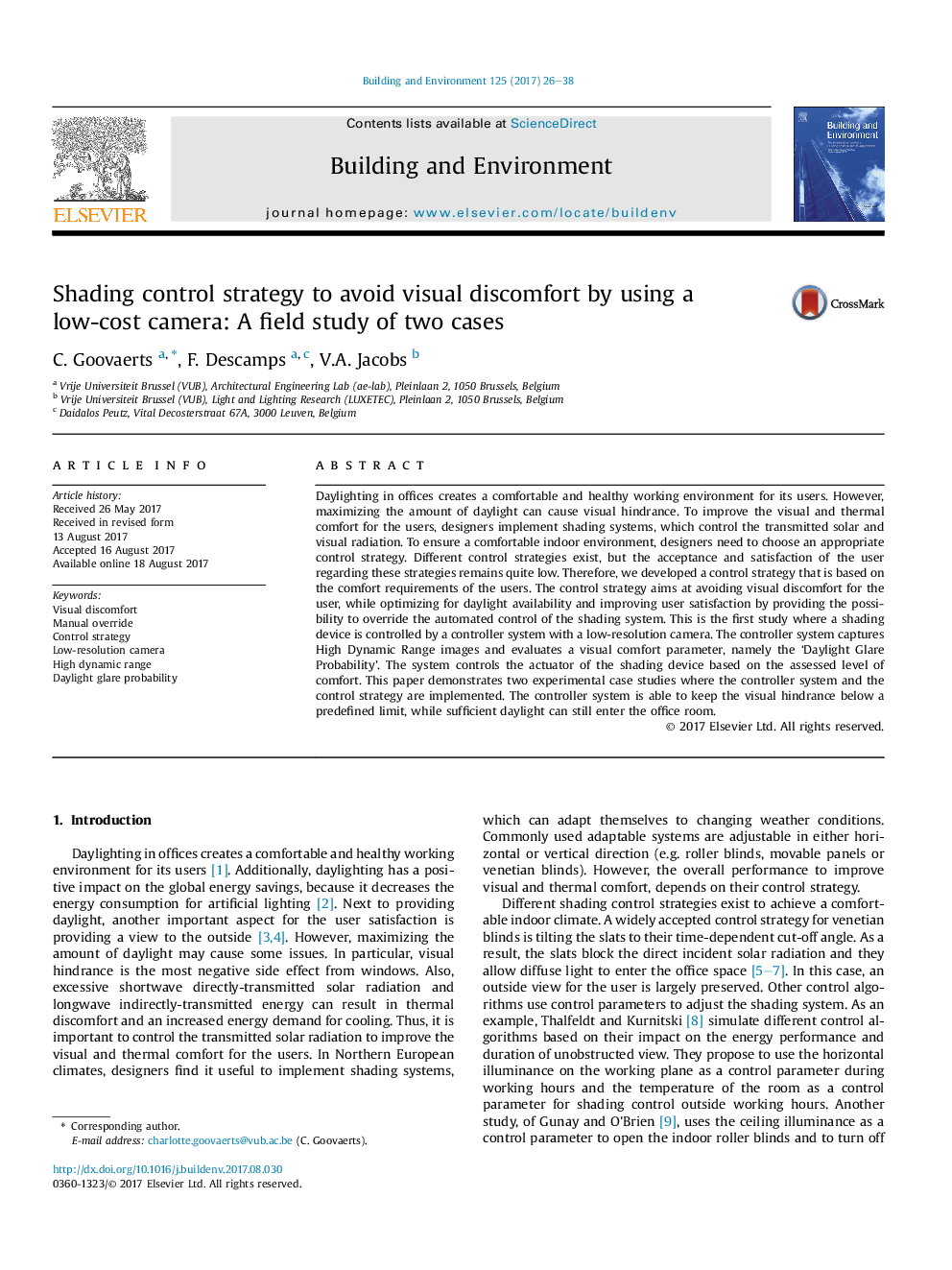| Article ID | Journal | Published Year | Pages | File Type |
|---|---|---|---|---|
| 6479210 | Building and Environment | 2017 | 13 Pages |
â¢A new shading control strategy based on visual discomfort measurements is formulated.â¢A controller system with a low-resolution camera is used to assess the visual comfort.â¢The control strategy allows manual override actions to improve the user's comfort.â¢The control strategy is used in two case studies with different shading devices.â¢The results show a positive influence on daylight availability in the room.
Daylighting in offices creates a comfortable and healthy working environment for its users. However, maximizing the amount of daylight can cause visual hindrance. To improve the visual and thermal comfort for the users, designers implement shading systems, which control the transmitted solar and visual radiation. To ensure a comfortable indoor environment, designers need to choose an appropriate control strategy. Different control strategies exist, but the acceptance and satisfaction of the user regarding these strategies remains quite low. Therefore, we developed a control strategy that is based on the comfort requirements of the users. The control strategy aims at avoiding visual discomfort for the user, while optimizing for daylight availability and improving user satisfaction by providing the possibility to override the automated control of the shading system. This is the first study where a shading device is controlled by a controller system with a low-resolution camera. The controller system captures High Dynamic Range images and evaluates a visual comfort parameter, namely the 'Daylight Glare Probability'. The system controls the actuator of the shading device based on the assessed level of comfort. This paper demonstrates two experimental case studies where the controller system and the control strategy are implemented. The controller system is able to keep the visual hindrance below a predefined limit, while sufficient daylight can still enter the office room.
